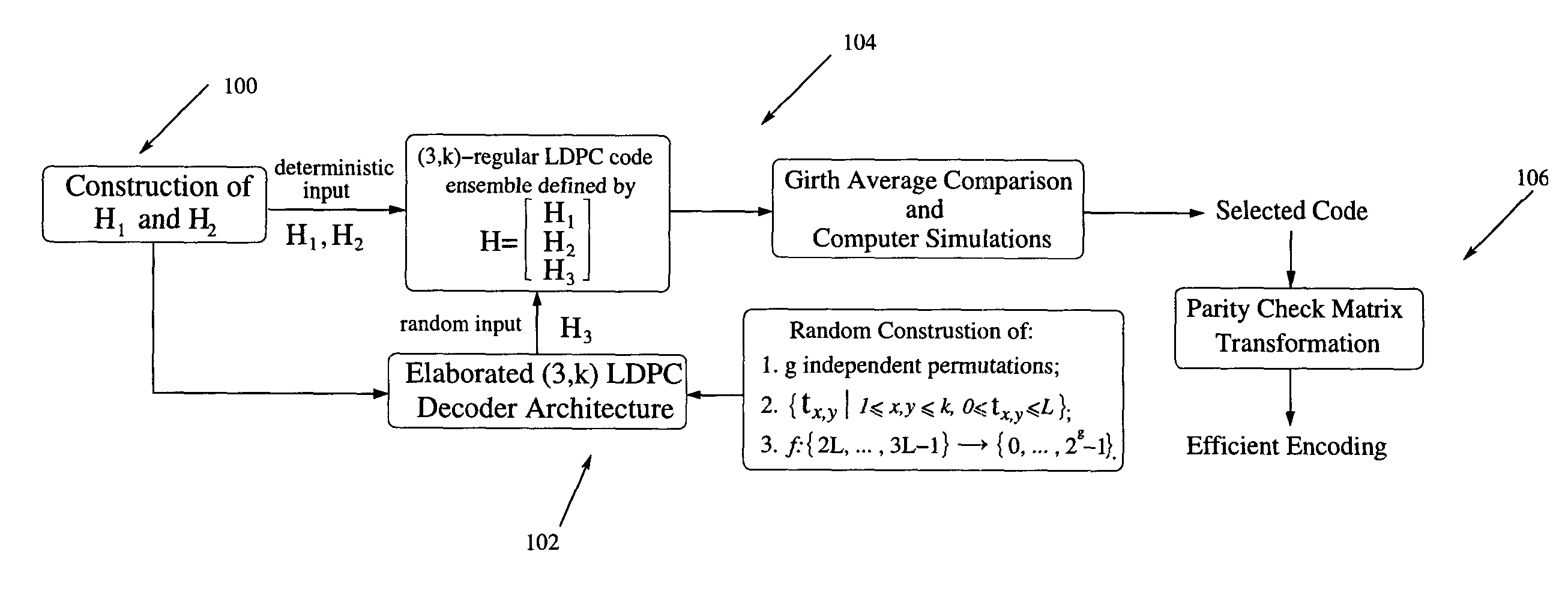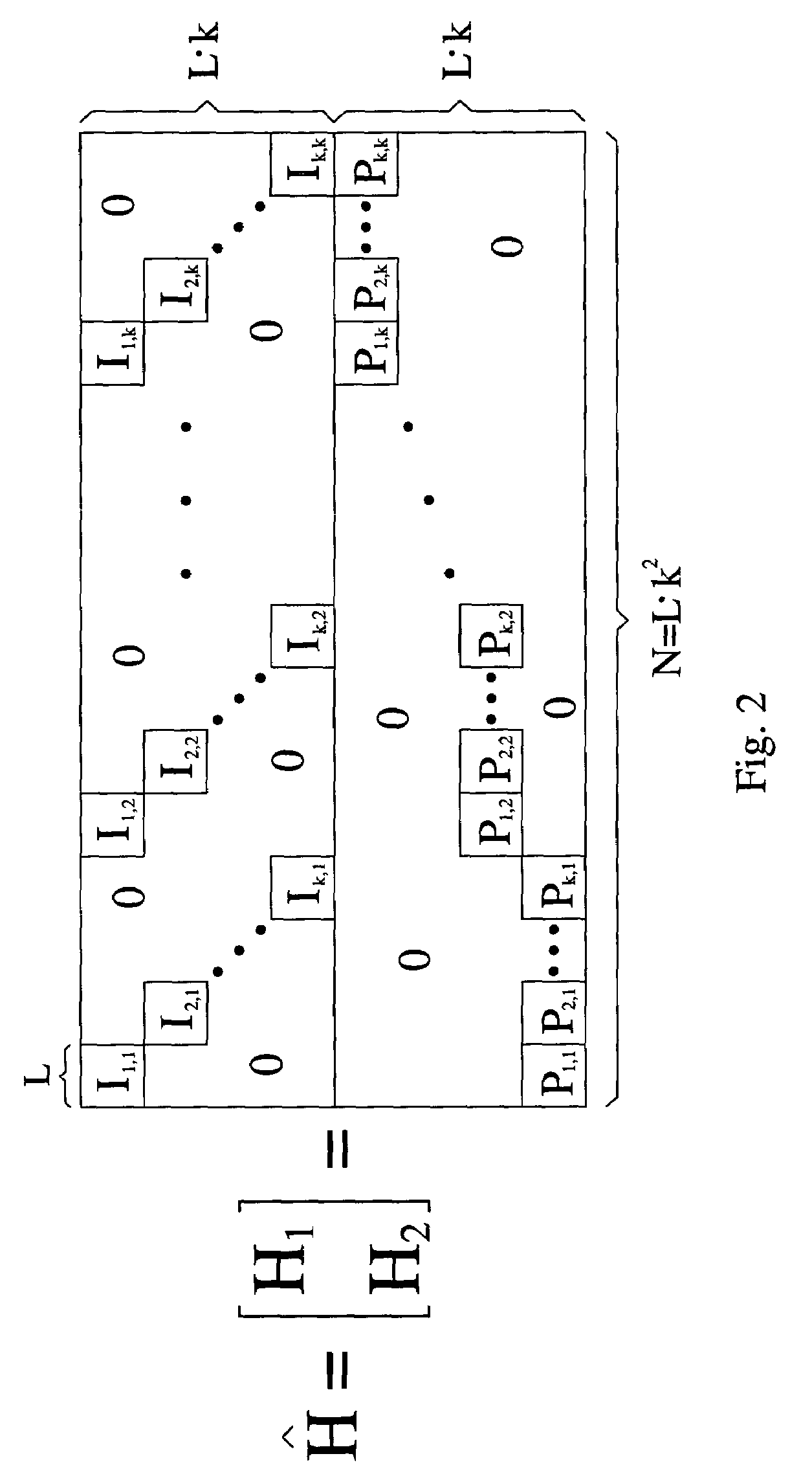LDPC code and encoder/decoder regarding same
a technology of encoder/decoder and error correction code, applied in the field of data transmission, can solve the problems of different and difficult challenges, fully parallel decoder, and stills difficult code design, and achieve the effect of reducing the complexity of encoder implementation
- Summary
- Abstract
- Description
- Claims
- Application Information
AI Technical Summary
Benefits of technology
Problems solved by technology
Method used
Image
Examples
Embodiment Construction
Background on LDPC Code and Message Passing Decoding Algorithm
[0022]An LDPC code is defined as the null space of a very sparse M×N parity check matrix, and is typically represented by a bipartite graph (a bipartite graph is one in which the nodes can be partitioned into two disjoint sets) usually called a Tanner graph, between N variable (or message) nodes in one set and M check (or constraint) nodes in another set. An LDPC code is called (j, k)-regular if each variable node has a degree of j and each check node has a degree of k. The construction of an LDPC code (or its Tanner graph) is typically random. LDPC codes can be effectively decoded by the iterative message passing. The structure of the message passing decoding algorithm directly matches the Tanner graph: decoding messages are iteratively computed by all the variable nodes and check nodes and exchanged through the edges between the neighboring nodes. It is well known that the message passing decoding algorithm works well i...
PUM
 Login to View More
Login to View More Abstract
Description
Claims
Application Information
 Login to View More
Login to View More - R&D
- Intellectual Property
- Life Sciences
- Materials
- Tech Scout
- Unparalleled Data Quality
- Higher Quality Content
- 60% Fewer Hallucinations
Browse by: Latest US Patents, China's latest patents, Technical Efficacy Thesaurus, Application Domain, Technology Topic, Popular Technical Reports.
© 2025 PatSnap. All rights reserved.Legal|Privacy policy|Modern Slavery Act Transparency Statement|Sitemap|About US| Contact US: help@patsnap.com



